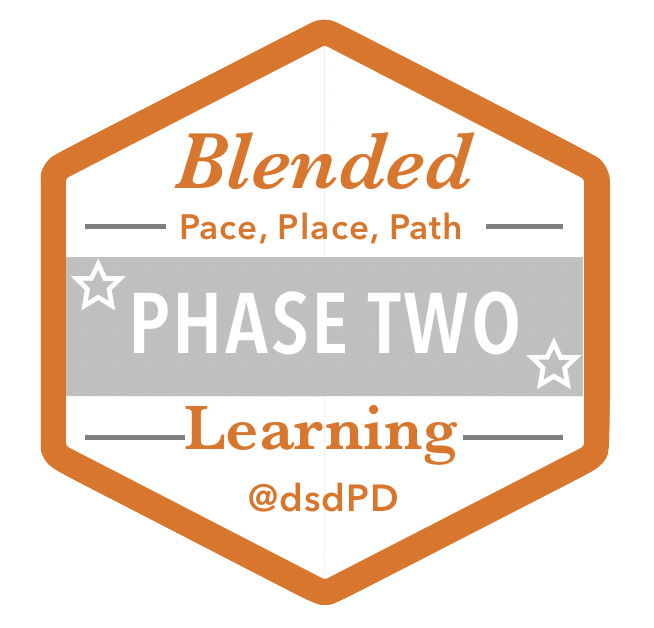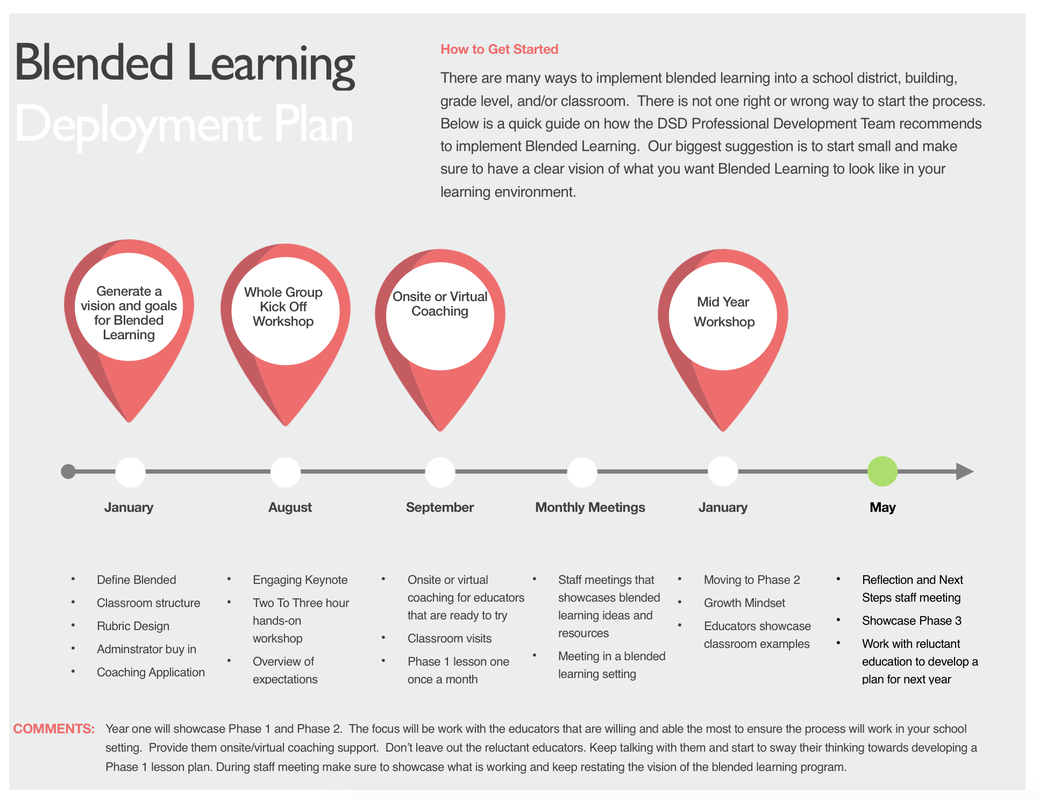Blended Learning a way to Differentiate Instruction. With the unknown of schedules, classroom setups, and all of the new required guidelines to keep everyone healthy and safe, it is essential to start to design a deployment plan(s) for the upcoming school year. Marcia Kish has created a simple guide for you and your team to use while planning for the next school year. Note that it is never too early to start professional development training. We provide virtual and onsite training for all staff members. Contact us to learn more.
Blended Learning: A way to Differentiate Instruction
With over thirteen years of experience with implementing and deploying Blended Learning into the classroom, Marcia Kish, has developed a quick start checklist to help your school start down the Blended Learning journey.
|
Task One: Understand The Why of Blended Learning
Take time to read and learn more about Why Blended Learning is the New Normal and Why Blended Learning Works: bit.ly/blendblogpost
Task Two: Watch and Learn
Spend time watching and learning from other blended learning classrooms. Start by watching the Blended Learning Overview video bit.ly/marciakishblend
Task Three: Create a Deployment Plan
Sit down as a team and design a customized deployment plan for your school setting. Feel free to use this guide as a template bit.ly/blendplan
Task Four: Learn Together
Develop a like minded cohort. Find other educators that are deploying blended learning and start to learn from each other. bit.ly/3PBLChat
Task Five: Don’t Be Afraid to Fail
Blended Learning is new for so many educators, Administrators, coaches, students, and parents. It is okay to make mistakes. We are all in this “New Normal” together.
|
The Weekly Blend with Marcia Kish Summer Edition
|
|
Week 01Please take a moment to learn about one of my new FAVORITE technology devices for the hybrid, onsite, and virtual classroom, eGlass. In this video, I will showcase a new dry erase board for the classroom called eGlass. Every teacher should have this in their classroom.
Next, in the video, I will talk about Designing vs. Decorating the Blended Learning Classroom. It is essential to start out thinking about the layout of the Blended Learning environment first before starting to decorate the classroom. The layout is KEY for a successful implementation of Blended Learning. Finally, this week, I will showcase Blended Learning resources that will kick start the learning process of Blended Learning, how to get started, and much more. Join me next week on the Weekly Blend with Marcia as we explore the Deployment Plan to start with Blended Learning. |
What are the Three Phases of Blended Learning?
|
The Three Phases of Blended Learning were designed and created by Marcia Kish. As a blended learning coach, Marcia realized that a gradual release program works best when transforming the traditional classroom into the right blended learning environment. The Three Phases of Blended Learning explores ten key elements that we look for in the classroom setting. The ten components include the use of data and assessment, allowing students to work at their own pace, place, and path, the use of digital content, student engagement, and the role of the teacher. The teacher can move through the continuum at her own pace and flow between Phase One, Phase Two, and Phase Three depending on the nature of the lesson provided to the students.
|
|
The DSD Professional Development team is striving towards expanding future-ready classroom environments through the implementation of personalized learning where the learners take ownership of their learning. With the application of the six-phase rollout process, classroom teachers can gradually work towards designing a learning space that personalizes the education for each student.
Phase 1 - Explores how to transition into a future-ready classroom setting by redesigning the space, breaking the lesson into four parts: mini-lesson, independent practice, digital content, and future-ready skills, and starts to implement personalized adaptive technology software programs that mimic the mini-lesson topics.
Phase 2 - Shifts the idea of teaching the same thing to all students to differentiating instruction by exploring the data to drive the mini-lessons, and focusing on the skills that the individual learner is ready to learn through independent practice and adaptive technology. The future-ready skills start to allow for choice and voice in projects that promote creativity, collaboration, communication, critical thinking, and connectedness.
Phase 3 - Constructs learning targets that will showcase the implementation of project-based learning, 20% Time, or Genius Hour projects. The teacher provides learning opportunities throughout the week, unit, semester for the students to work on the projects during the future-ready skills activities and the ongoing personalized learning checklist.
Phase 1 - Explores how to transition into a future-ready classroom setting by redesigning the space, breaking the lesson into four parts: mini-lesson, independent practice, digital content, and future-ready skills, and starts to implement personalized adaptive technology software programs that mimic the mini-lesson topics.
Phase 2 - Shifts the idea of teaching the same thing to all students to differentiating instruction by exploring the data to drive the mini-lessons, and focusing on the skills that the individual learner is ready to learn through independent practice and adaptive technology. The future-ready skills start to allow for choice and voice in projects that promote creativity, collaboration, communication, critical thinking, and connectedness.
Phase 3 - Constructs learning targets that will showcase the implementation of project-based learning, 20% Time, or Genius Hour projects. The teacher provides learning opportunities throughout the week, unit, semester for the students to work on the projects during the future-ready skills activities and the ongoing personalized learning checklist.






